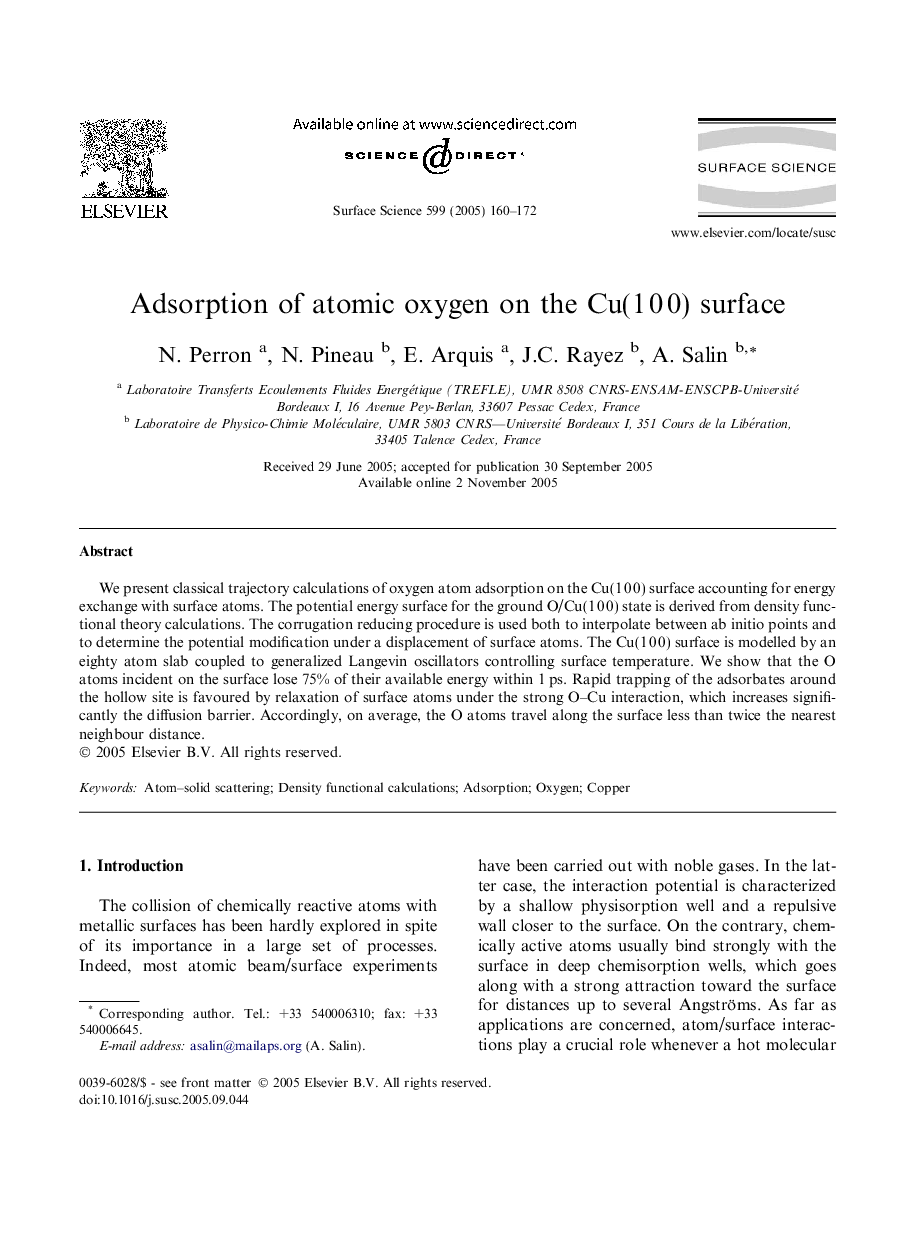| Article ID | Journal | Published Year | Pages | File Type |
|---|---|---|---|---|
| 9594902 | Surface Science | 2005 | 13 Pages |
Abstract
We present classical trajectory calculations of oxygen atom adsorption on the Cu(1Â 0Â 0) surface accounting for energy exchange with surface atoms. The potential energy surface for the ground O/Cu(1Â 0Â 0) state is derived from density functional theory calculations. The corrugation reducing procedure is used both to interpolate between ab initio points and to determine the potential modification under a displacement of surface atoms. The Cu(1Â 0Â 0) surface is modelled by an eighty atom slab coupled to generalized Langevin oscillators controlling surface temperature. We show that the O atoms incident on the surface lose 75% of their available energy within 1Â ps. Rapid trapping of the adsorbates around the hollow site is favoured by relaxation of surface atoms under the strong O-Cu interaction, which increases significantly the diffusion barrier. Accordingly, on average, the O atoms travel along the surface less than twice the nearest neighbour distance.
Related Topics
Physical Sciences and Engineering
Chemistry
Physical and Theoretical Chemistry
Authors
N. Perron, N. Pineau, E. Arquis, J.C. Rayez, A. Salin,
